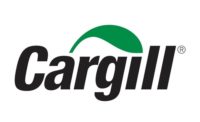Curion, a leading research and consumer product testing firm recently launched “LifeLabs, an in context-testing approach that allows brands to study the way consumers use their products. Rather than a test kitchen or sensory laboratory, LifeLabs conducts product testing in real life settings.
According to Patricia Manos, vice president, marketing and partnership “Our research has revealed that the most accurate consumer insights are born from people interacting with products in their day-to-day lives: after a quick workout at the gym and on the way to pick up the kids, on an early morning business trip flight or mid-way through a grocery run when an energy boost is crucial. Life is busy, complicated, distracting, and unpredictable, and consumers want products that work for them amid their life. Today, in context is everything.
The on-demand future is here. People eat anytime, anywhere (think Uber Eats). They order online and get 1-day delivery. Consumer expectations are ‘you bring it to me.’ Example? They can click and get an LA-style fitness class brought right to the recumbent bike in their family room. For all these reasons and more, Curion decided to take product testing to consumers.
The thinking behind LifeLabs
The theory behind this methodology is that where a product is typically used can enhance or detract from its appeal. Does a craft beer taste as good in a test lab as it does in a man cave, when the consumer is relaxing in front of a football game on a flat screen? Sun Screen may not smell “tropical” in a lab — but how about in the midst of wind and waves on a beach?
The reasoning behind LifeLabs has been backed by consumer science research. A recent report in Science Direct on “thinking outside of the booth” puts it this way, “Moving sensory and consumer research from the standard sensory booth setting closer to where consumers actually purchase or consume the products being tested may thus increase a test’s ecological validity. It is well established that consumer responses to the same foods can differ depending on the setting or location where these foods are tested.”
How LifeLabs pays a dividend
“We designed LifeLabs so that all stakeholders win,” says Manos. “Our partners can now provide unforgettable experiences designed to complement their business model, by empowering their members to share their opinions while testing complimentary products. Consumers feel that their opinions are being heard. Brands are able to bridge the gap between the consumer and the product because the experience replicates a real-life situation. This in context methodology elicits a deeper response.”
Says Manos, “At no additional cost, our partners — gyms, airlines, senior centers, restaurants and the like — get to offer their customers something unique and fun that is outside the traditional experience. And their customers will be incentivized in ways that create repeat business.”
The advantages of LifeLabs
Curion’s new method of contextual research provides these advantages to clients:
- Gets closer to the consumer in the environment of their chosen lifestyle
- Allows for natural biases
- Offers clarity about product usage in real time
- Gains context-rich insights on how every-day habits affect preference
- Tests prototypes early before going into production
- Identifies the moments where the product shines (and where it doesn’t)
- Delivers a benefit to all involved, the brand, the venue and the consumer
Behavior scientists that run LifeLabs also conduct product studies in virtual reality rooms where consumers come in contact with mock-ups. This gives people the opportunity to see what a product might look like on a store shelf. Curion can track the purchasing process and evaluate how the product holds up against competitors as participants “shop.”
In the words of Curion CEO Sean Bisceglia, “Our partnership strategy, to engage with venues like theaters, restaurants, health clubs and the like, has outstripped our initial expectations. And the brands are finding that the in context nature of the product testing aligns well with consumer demand for an engaging brand experience.”
To learn more about Curion Insights and the LifeLabs Program, visit https://curioninsights.com.







